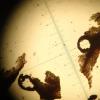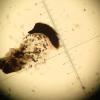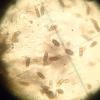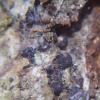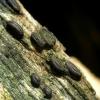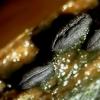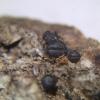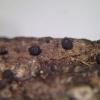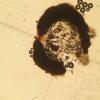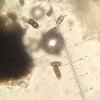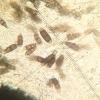
22-12-2025 00:47
Patrice TANCHAUDBonsoir, récolte à proximité du milieu dunaire

21-12-2025 21:32
Pol DebaenstHello, Garden, Burgweg 19, Veurne, BelgiumOn 10/1

21-12-2025 21:40
Isabelle CharissouBonjour, j'aimerais connaitre les références de

21-12-2025 21:31
Pol DebaenstHello, Garden, Burgweg 19, Veurne, BelgiumOn 10/1

21-12-2025 21:31
Pol DebaenstHello, Garden, Burgweg 19, Veurne, BelgiumOn 10/1

20-12-2025 23:08
Patrice TANCHAUDBonsoir, récolte sur sol sablonneux dans l'arri�

21-12-2025 09:32
Hello.A tiny ascomycete found embedded in wood in

20-12-2025 15:47
Mirek GrycHi.These grew on pine wood that was heavily covere
 Hello,
Hello,I found that in an herbarium sheet, probably on Fagus sylvatica, in France, Puy-de-Dôme (63). Do any one can confirm / infirm the ID ? I'm not conviced by the general shape...
Many thanks for the help!
Rémy

Hi Remy,
although the macrofoto is not very distinctive and does not show the form of the coffee beans I think there can be no doubt because of the very unique spores.
Regards from Lothar

Many thanks for your very quick answer !
I agree that I make very poor quality picture - not sure yet if it is because of the photographer, or the material ;)
In fact, I was not sure for this ID because many herbarium sheets I am currently reviewing (for epiphytic lichens) contains this species, and most of them are more "sphaerical" that coffee bean shaped... All are from the same locality.
Cheers,
Rémy

Hi Remy,
the growth on bark of living deciduous trees is very typical for H. pulicare. But - if the ascomata are not hysterothecia, it must be something different, anyway ...
Best regards from Lothar

Thank you for the precision ; I will try to ID other specimen in order to be sure !
Bests,
Rémy

Hi Remy,
the pictures show clear hysterothecia in my opinion. Do they have the same spores (4-celled with terminal hyaline cells)? Then it ist H. pulicare.
Maybe unripe or badly developed specimens do not form the typical slit very distinctly. Peters fotos are very typical.
Regards from Lothar
this goes not without microscopic examination. If the scales of the photos 1:1 with the micro, it cannot be H. pulicare, the spores would be too small there.
Greetings Peter.
now everything is clear.
Greetings Peter.

